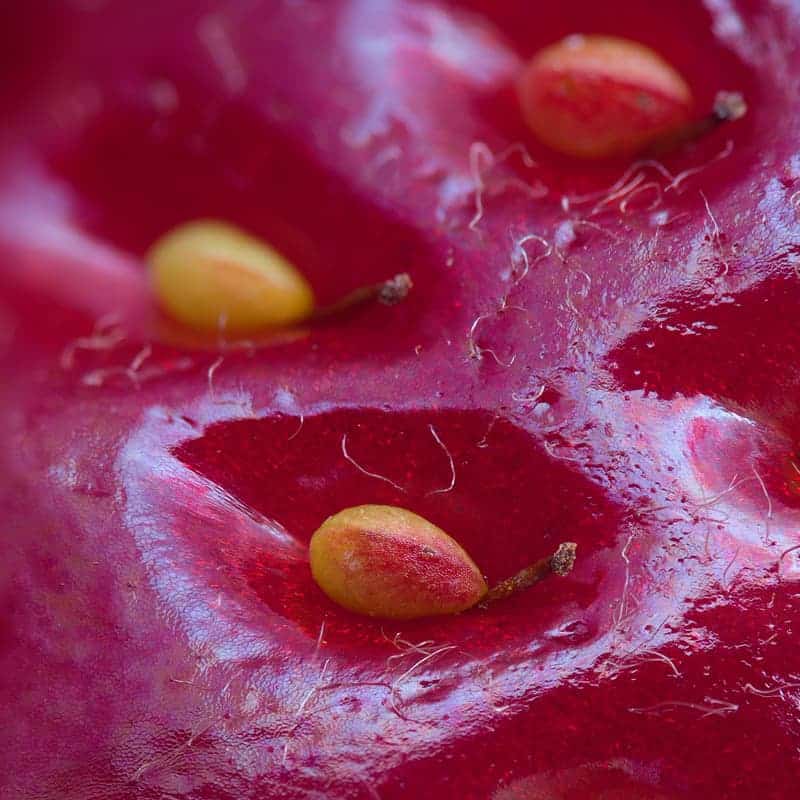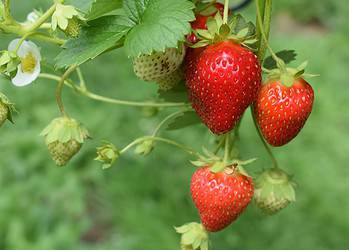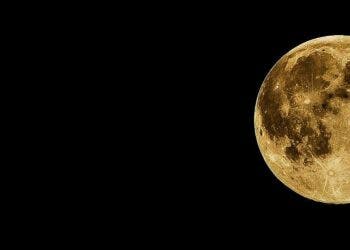Ever seen a strawberry up close? Well, you probably haven’t seen it up close like this!
This spectacular image was taken by photographer Alexey Kljatov; he explains how he took the photo:
“Focus stacking + averaging (10 groups with different focus, each group contains 8 identical shots for averaging). The problem with this shot was that strawberry is too glossy (I put white plastic bag around berry to diffuse daylight).”
OK, now it’s biology time. In case you’re wondering what you’re seeing there, the little yellow-reddish thing is called an achene — it’s not a seed. Each strawberry has over 100 achenes, each with a single seed inside of them. So the achenes are the fruits, and the seeds are inside of them… so then what’s the strawberry? Well, the strawberry is not a fruit, and it’s not even a berry in the botanical sense. It is accessory tissue for an aggregate fruit, formed from multiple ovaries of one flower. But it can get even stranger than that. Strawberries can be hermaphroditic, with male and female parts, or with distinct genders. They do not even rely on seeds to reproduce.
So the strawberry is technically not a berry, it’s not even a fruit. It’s an aggregate from the plant’s receptacle, the thickened part of a stem from which the flower organs grow.
But that doesn’t make them any less delicious or nutritious. Studies have correlated strawberries with a decreased cardiovascular disease risk. Furthermore, phytochemicals present in strawberries have been shown to anti-inflammatory or anticancer properties. In our hearts (and stomachs), strawberries will forever be delicious and healthy fruits.
If you want to truly appreciate the beauty of this photo, check out the full 2695 x 2695 pixel resolution image here.






